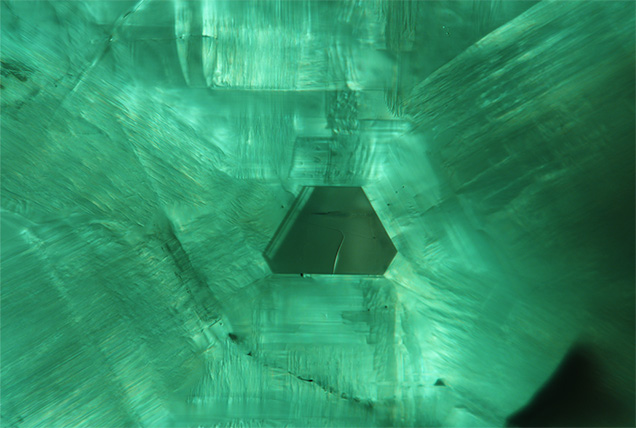Trapiche-Like Pattern in an Emerald from Pakistan

GIA’s colored stone research collection contains many unique samples. The emerald sample shown above was mined at Swat Valley in the Khyber Pakhtunkhwa region of Pakistan and fabricated by polishing two parallel windows perpendicular to the c-axis of the hexagonal crystal in order to show its inclusions. The sample weighed 0.47 ct prior to fabrication and 0.36 ct after processing.
At first glance, nothing unusual was noted in this sample, but when correctly illuminated under the microscope it revealed a pattern that could easily pass for trapiche. The stone showed radiating zones of turbid growth with six-fold symmetry. This makes it a trapiche-like stone rather than a true trapiche, which has distinct arms that separate the growth zones. While classic trapiche patterns are mostly associated with Colombian emeralds, the Swat region also produces emeralds with radiating black intergrowths. Still, this structure was very different from the trapiche structure previously documented in some emeralds from Pakistan (Fall 2019 Gem News International, “Trapiche emerald from Swat Valley, Pakistan,” pp. 441–442). In this case, the distinct growth feature consisted of a colorless hexagonal core from which six-rayed fibrous arms extended. Lighting was an important consideration in maximizing the color in this stone, and the features were fully observed using brightfield illumination. This was a wonderful example of a pattern rarely encountered in emeralds.



